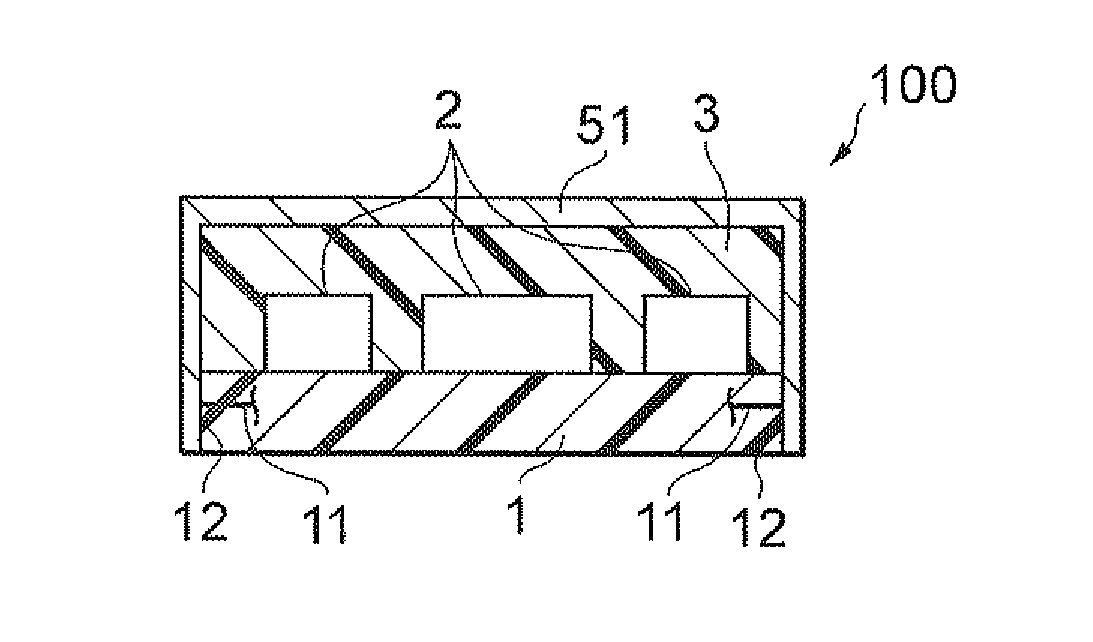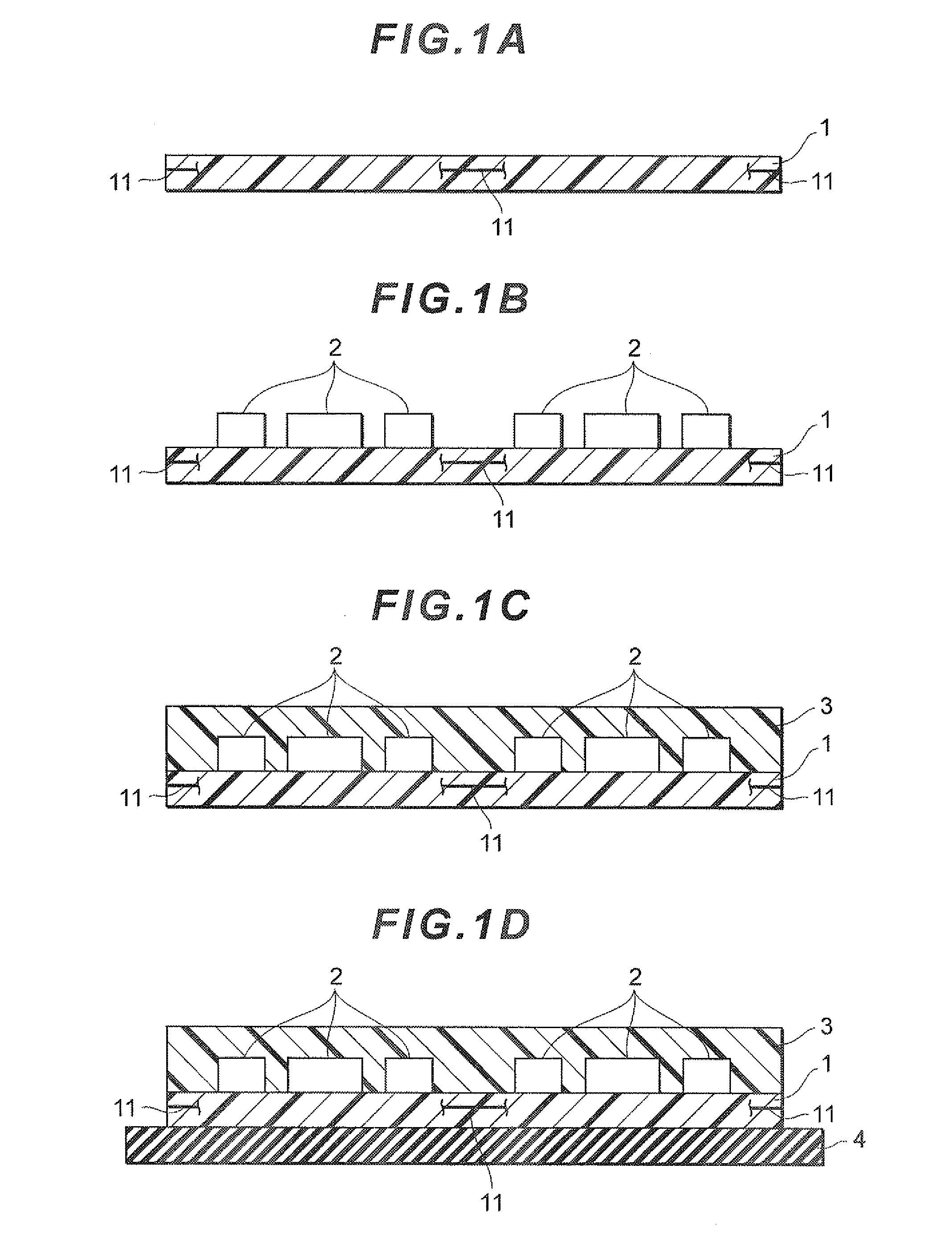Electronic component module and method of manufacturing the same
a technology of electronic components and components, applied in the field of electronic component modules, can solve the problems of reducing the size of the substrate and/or electronic components, affecting the reliability of affecting the reliability of electrical connection, so as to improve the mechanical strength and electrical connection reliability, the effect of improving the electromagnetic noise shielding performance and the shielding properties
- Summary
- Abstract
- Description
- Claims
- Application Information
AI Technical Summary
Benefits of technology
Problems solved by technology
Method used
Image
Examples
example 1
[0069]A conductive paste was prepared using flat-shaped Ag powder having an average particle diameter of 5 μm as the first filler (base filler), Ag nanofiller having an average particle diameter of 30 nm as the second filler, an epoxy resin (liquefied bisphenol A epoxy resin and imidazole) and butyl carbitol acetate. The total content of the first filler and second filler in this conductive paste was 90 mass % on the basis of the mass of the epoxy resin. The conductive paste was provided by stencil printing on the substrate 1 and molding resin 3, then heated and cured at 70 degrees Celsius for 30 minutes and at 160 degrees Celsius for 60 minutes to form a cured film of the conductive shield 51, to thereby prepare an electronic component module according to the present invention having the same configuration as the electronic component module 100 shown in FIG. 3.
example 2
[0070]An electronic component module according to the present invention was prepared in the same manner as in Example 1, except that Cu-coated Ag powder having an average particle diameter of 5 μm was used as the first filler and Sn—Bi spherical powder having an average particle diameter of 5 μm was used as the second filler. The total content of the first filler and second filler in this conductive paste was 90 mass % on the basis of the mass of the epoxy resin.
[0071]Test and Evaluation 1: Observation on Cross Sections of Conductive Shields (States of Neck Growth)
[0072]FIG. 4 and FIGS. 5A and 5B are electron micrographs showing, in enlarged views, the cross sections of conductive shields in the electronic component modules obtained in Comparative Example 1 and Examples 1 and 2, respectively. Note that one tick of the scale shown in the photos in FIG. 4 and FIGS. 5A and 5B corresponds to 20 μm. The result shown in FIG. 4 indicates that individual particles in the metal filler (indiv...
example 7
[0086]An electronic component module according to the preset invention was prepared in the same way as Example 1 except that: Cu-coated Ag flat-shaped powder having an average particle diameter of 5 μm was used as the first filler; Sn—Bi spherical powder having an average particle diameter of 5 μm was used as the second filler, butyl carbitol acetate and carboxylic acid were used; the conducive paste was heated under the conditions of 150 degrees Celsius for 20 minutes and 180 degrees Celsius for 60 minutes; and the oxygen concentration of the ambient air during the heating and curing process of the conductive paste was controlled to 500 ppm or less.
[0087]Test and Evaluation 4: Observation on Cross Section of Conductive Shield (State of Neck Growth)
[0088]The cross sections of the conductive shields in the electronic component modules obtained in Comparative Example 4 and Example 7 were observed in enlarged views using an electron microscope in the same way as in Test and Evaluation ...
PUM
 Login to View More
Login to View More Abstract
Description
Claims
Application Information
 Login to View More
Login to View More - R&D
- Intellectual Property
- Life Sciences
- Materials
- Tech Scout
- Unparalleled Data Quality
- Higher Quality Content
- 60% Fewer Hallucinations
Browse by: Latest US Patents, China's latest patents, Technical Efficacy Thesaurus, Application Domain, Technology Topic, Popular Technical Reports.
© 2025 PatSnap. All rights reserved.Legal|Privacy policy|Modern Slavery Act Transparency Statement|Sitemap|About US| Contact US: help@patsnap.com



